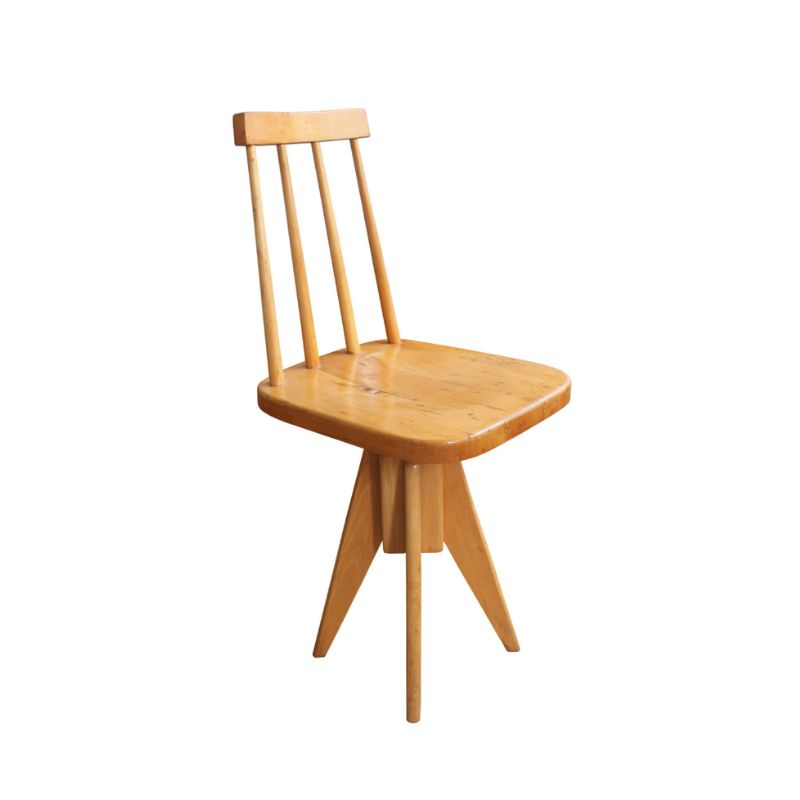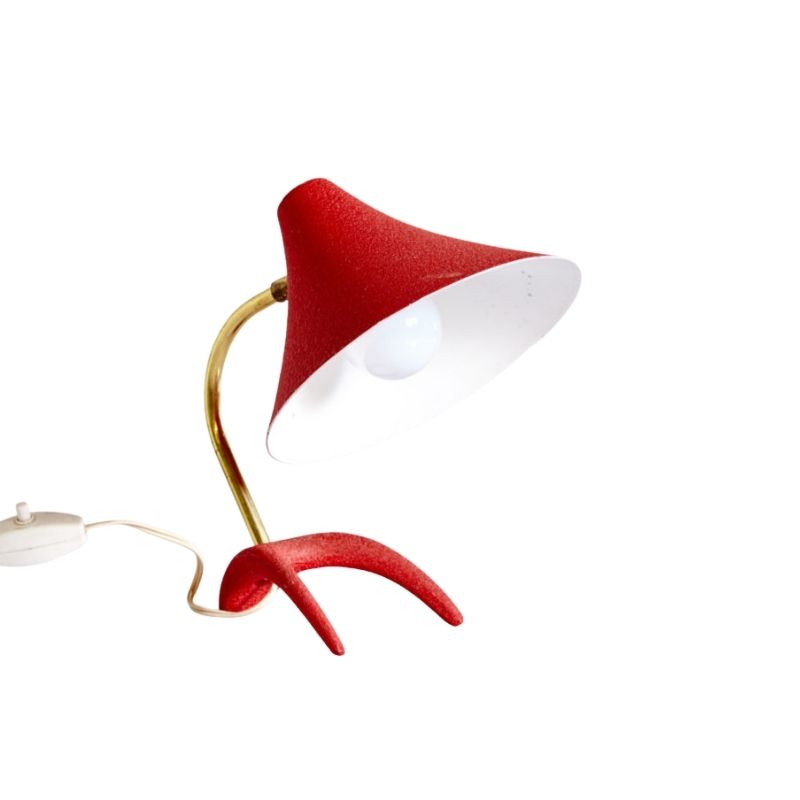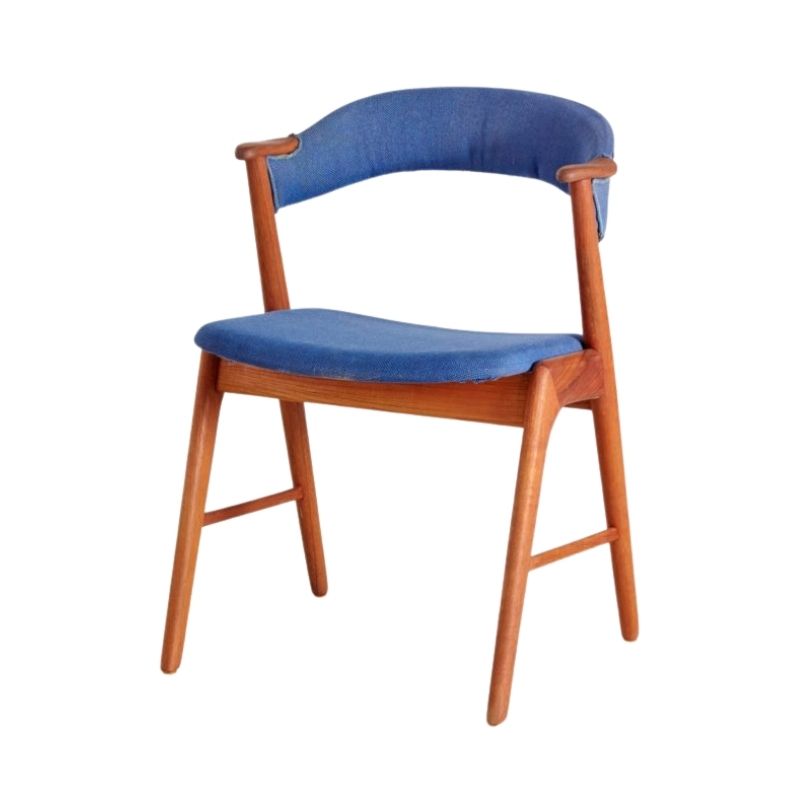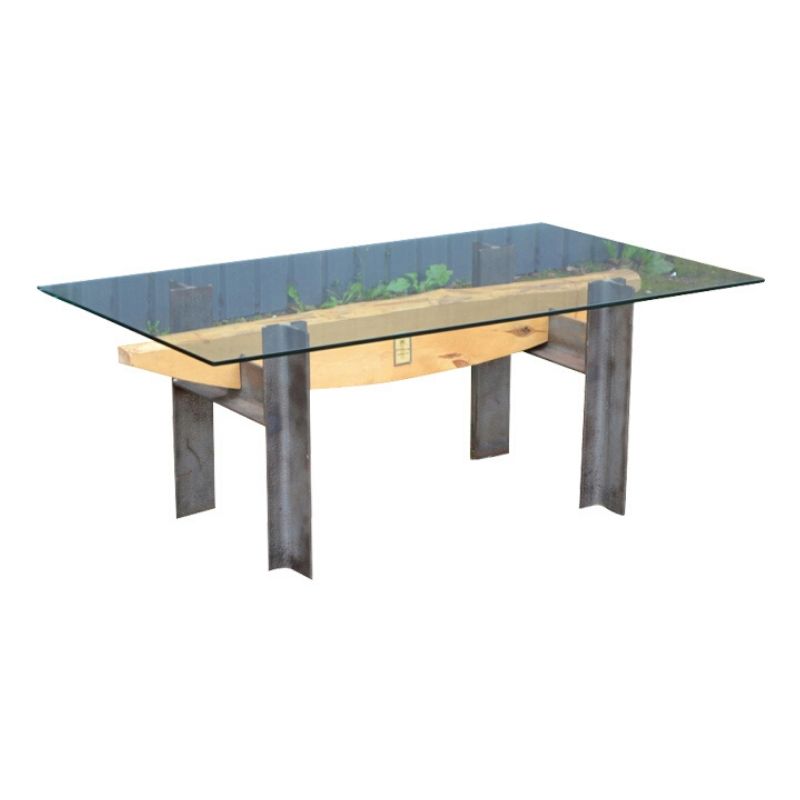I like that new
table, Leslie. How is the metal worked to give that texture -- if that isn't a secret ? The cantilevered form is delightful.
I like about half of the tables you show at the top. Of course, one must see these things in person to be sure. As for the display, you're right about the need to raise the "lowly table" to a viewable height. You found a handsome concrete block and used it sensitively. Perhaps if they'd been painted . . . ?
My favorites are the two tables with arcs beneath the concrete top, and the "plain" one where you find a new way to give a vertical square-section leg an outward taper. This last is surely a woodworker's play, to my mind: One wants to simplify structure with squared joinery while introducing an expressive form which solves an ancient problem of perspective -- countering the appearance of a rectangular form from above, where the legs can seem actually to converge awkwardly inward.
Bit surprised that of all...
Bit surprised that of all the talk of art, design and craftsmen...didn't read anything regarding Architecture. Tables are an excellent medium to explore architectural elements. Your tables express a considerable amount of tension. I really appreciate that emphasis on tension. Tension of form, tension of material, tension of presentation...most notably exemplified in the first three examples. The problem with tension, is that it usually requires some kind of release. My interpretation of that tension release in your tables is through movement. Haven't made up my mind about the last table. Table 7 leaves me baffled...don't understand what's going on here.
Perhaps you should be studying Architecture, not fine art?
Glassartist. It was not...
Glassartist.
It was not intended as a shin protector, but it surely does serve that purpose. Most of my tables are quite unforgiving. Concrete does not play nice with shins or hips. My girlfriend is not a fan.
SDR.
The treatment of the metal top isn't really a secret, rather an experiment. I've never seen it done before. It was a pain in the a**. I brazed bronze over the entire surface then polished it down before chrome plating.
I think your talking about the legs on the kitchen table, it took me a while to figure it out because you called it the plain one. Then I realized the above image doesn't show the top. See attached image. They're actually splayed out at 3 degrees. The profile exaggerates that effect.
The last all wood cocktail table was something I have never really done before, or again since. It was the first table I made when I transfered in to the program. It was my way of showing everyone I was a competent woodworker. Then I got back to my concrete tables.
Woofwoof.
Your perceptions are not far off, I was originally an architecture student. I left that discipline because I found it too rigid and uncompromising.
All.
I have enjoyed this thread thoroughly. It was a little rough here and there, but overall I'm glad I have brought my work here. Shame how it got off track a bit lately, but that is to be expected in any open forum of diverse people. Usually , as I feel is the case here, the natural instinct to not upset the herd prevails.
more
The point is that over the years while I always attempted to approach each discipline uniformly I always seemed to equate my pragmatic tendencies to writing and my creative whims to music and songwriting. This isn't however the case. It would seem so and would certainly make sense. But only after years did I learn that on subliminal levels I was being affected by the medias themselves and thus adjusting my temperament to hopefully create what I perceived as right in each discipline.
When I would set out to write a story I would often get off the beaten path in humorous and bizarre lines of thought. And contrarily, whilst writing lyrics and hooks I was a serial time waster, discarding one thought after another.
Finally I realized that I didn't take music or at least me and music as seriously as I did literature. And in literature, I took writing and only the mere alphabets I had to offer a page more seriously than life itself as there's nowhere to hide in printed nib. And thus my mind's eye's answer was to counteract dead people's boring literature by delving into the ridiculous and, on the flip side, attempting to add a bit upright cognitive thought to rock & roll.
Neither worked in spades, I can tell you. And finally I was forced to delineate each discipline and my reactions to each in kind to get a proper synopsis of what I'd done and what I'd like to do. Only then was I able to decide what my vision of either actually was and whether or not it was proper.
I think this applies to you and your craft, which may become art.
Amidst all the nonsense...
I'd neglected to comment on the pieces themselves.
In all honesty, the only piece that remotely interests me is the dining table. Its simplicity is its greatest asset. But even it has issues. What are you accomplishing? It's a dining or breakfast table, yes? It's not as if anyone will hang it on their wall, no? This is the problem you're running into. It's neither art nor useful craft. The minute I set my orange juice into one of those grooves and have a mess to clean up I cease to appreciate the piece as a useful tool.
As glassartist and I have both advised, I think you need to either focus on art or craft. One or the other. Or if you must do both, you'd do yourself a favor to separate the two. Then if you begin to meld both craftsmanship and vision, at some point maybe you combine the two for some really significant pieces. But know that setting out with two converse approaches can complicate doing one well also.
Just to put myself out there so you don't feel I'm simply staring down from a convenient perch, I'll tell you a bit about myself. I'm a decent craftsman and have a real passion for restoration but by no means am I an accomplished craftsman or designer, although I'm learning. In fact, my hand is far behind my eye if I'm being honest.
The best perspective however I can offer you however is from experience as a writer and musician. I've done some things I'm quite proud of in both medias. But the pragmatic side of me was constantly belittling the creative side. And vice versa, the creative side of me would often say my pragmatic tendencies lead to my taking myself far too damn seriously. So over the years, I've discarded many works of which might or might not have been significant. But I can tell you that there are some of which I truly regret abandoning.
If we are lucky
this will be the end of my definitional rants. I would be very happy if the term "artisan" did not exist. Or as Dick Cheney put it on an entirely different subject, "reduce it to a size that we could drown in a bath tub". As I see it, it only exists to co-opt the misguided perception of art as somehow better than craft or design to unnecessarily bolster the other two. "artisan Bread" comes to mind. Terms like this make it very difficult for people in general to understand what an artist's job is, and why that job actually matters in this world.
Thanks to all and especially to Pegboard and Lunchbox for giving us so much personal context for your comments. I was hanging on every word!
Good to see its still going...
Good to see its still going and P + A fixed things.
I'd just ask why the do the decorative river of resin? Is that all it is meant to suggest? It could work, its not a bad idea but I don't think its been well executed, have a look at Duncan Gowdys cabinets, some of them handle that basic idea well. I totally agree with some other comments, abandon the fine art veneer and work on refining your craftsmanship and design skills, the 4th table with the arc legs demonstrates you can hold back.
Maybe just keep asking yourself what you can take away?
Good luck.
heath.
For me the resin is less about the resin and more about the fractured and broken concrete. The resin facilitates a glimpse inside of the material and speaks to both its stregths and weeknesses. But yes most people read it as a river, I've been asked what specific river it is supposed to represent. I looked at Gody's cabinets, but didn't see any with resin in them. Can I ask why you don't think its executed well?
.
Unfortunately I think we approach making things from very different perspectives so perhaps can't communicate too well. If I had thought that breaking a piece of concrete and then re-assembling it with resin was something to try the first thing as usual I would have thought was 'should I?'. People know concrete can break, confirming knowledge already held doesn't make art nor does using slightly clever sounding language.
...so many other reasons and thats where it would have stopped along with most of what I come up with. Personally I go for a less and better approach to life and working. If in 10 years time you are still pleased with these works th\en good, but frankly I think pleasing yourself is the major motivation here.
Of course self indulgence is...
Of course self indulgence is a factor in my work, but I assure you more than that the motivating facture is exciting pleasure in others. I think there is some level of self indulgence in all who make things, and personally I don't think that's a bad thing. Doing what makes you happy is a luxury, not a burden.
I apreciate the minimalist aesthetic, I really do. But it is by no means the only way to aproach object creation.
With most of my work I labor a great deal to bring the finish of the concrete to such a level as to mask its materiality. In this piece I went the other direction. I wanted to highlight the rough core of the material. While at the same time not compromising the experience of the viewer when vicerally interacting with the piece. I think this piece fails in many ways, I don't think the base and top work together harmoniously. Independant of each other I think they work well, just not together. It is the only concrete table I have done where there is not some form of interlocking joinery between the concrete and the wood, and I think that is a subconscious manifestation of my reservations about the piece.
I like that broken
top -- the concept doesn't need any explanation or justification for me, the idea is delightfully self-evident. The resin even seems the right material to "mend" the breaks.
Glassartist said ". . . to co-opt the misguided perception of art as somehow better than craft or design "
I think there's something to that. Why are these meant to be art objects, when most would be happy to call the craftsman an artist and let it go at that . . . ?
Ah -- semantics. At least we're not architects; they got into a terrible mess with theory and blah blah during the post-post-modern era, almost a generation ago. Thank god I didn't have to live through that when I was a student !
At the end of the day all my...
At the end of the day all my conceptions and convictions don't really matter. These peices don't come with manuscripts, so they will be viewed according to the viewers perceptions and predespositions. This is something I'm aware of, but a person can dream 🙂
Reverance asside the only real world tangible delineation between art and craft is the all mighty dollar. There is a price ceiling for craft objects, one that is securely rooted in the value of labor. Where as art is traded as a precious commodity of limited quantity, therefore theoreticaly the sky is the limit.
Not so
Many folks here can tell you of craft objects and even design works for production that have seen the sky. And there are a large range of factors that make it happen. Conversely, I have seen art prices in the toilet, also from a range of issues. Unless you are talking about multi million dollar price tags of course. Then you are correct. But there is a large price range well into absurd territory, that is visited by both. Watching prices for design objects, and craft works is an ongoing hobby on this forum, as well as a professional necessity for many here.
If you need any help, please contact us at – info@designaddict.com









